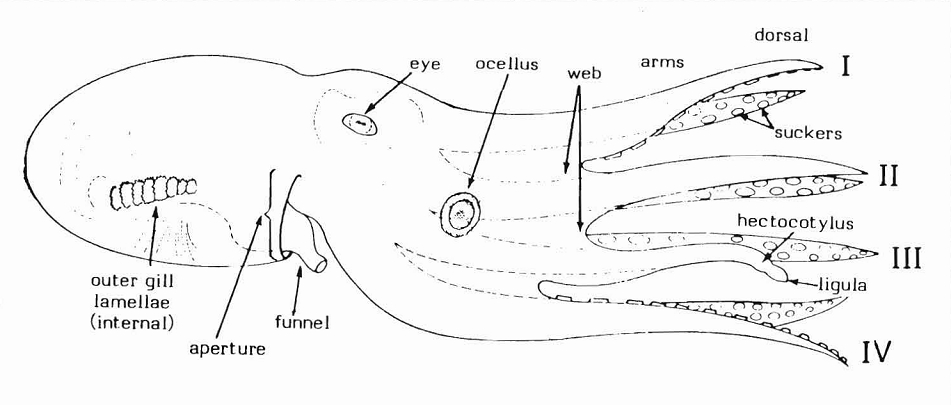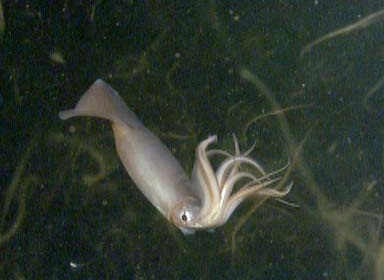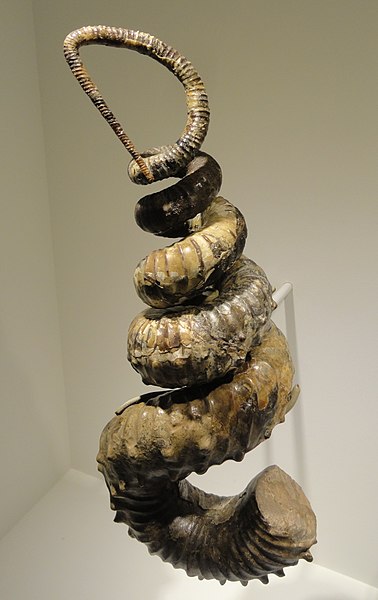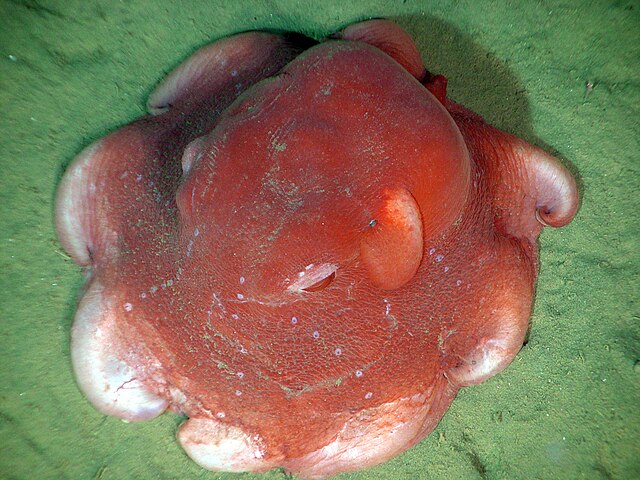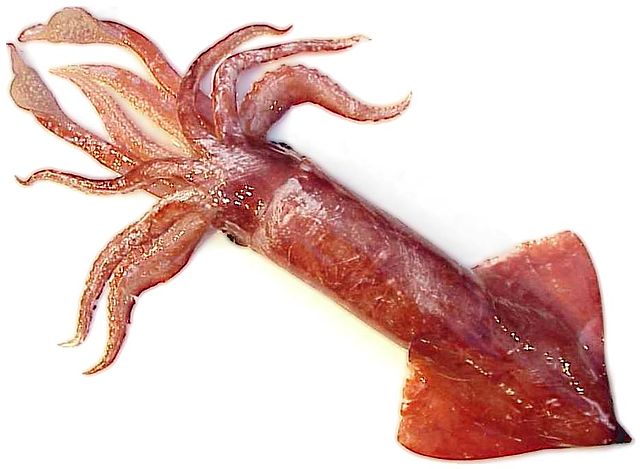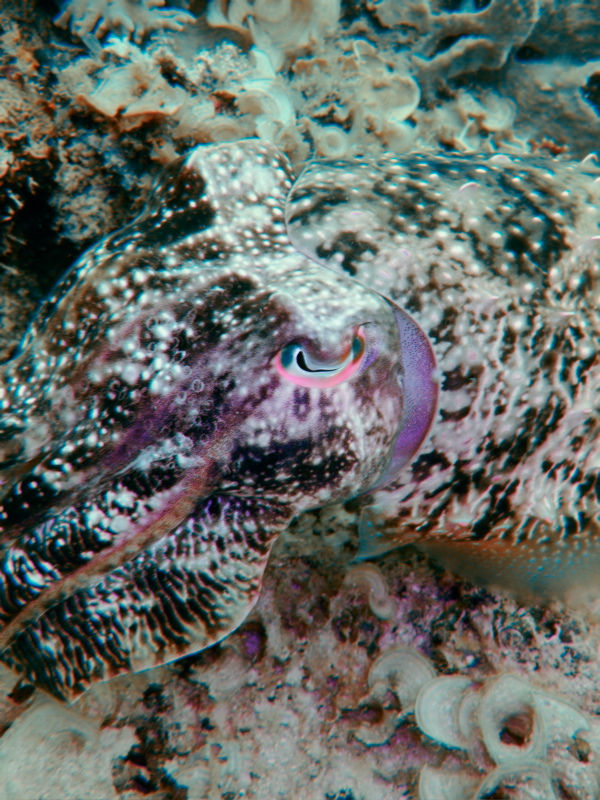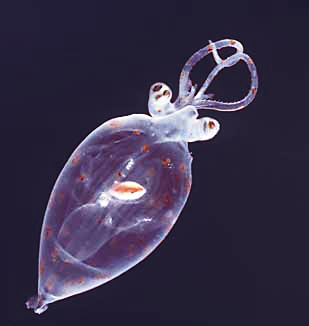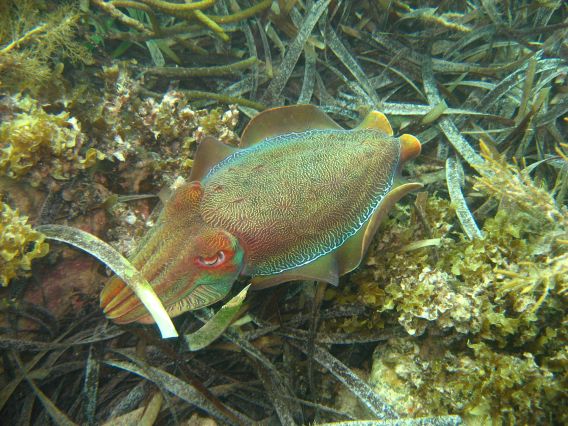We just learned about the
Japanese Flying Squid.
We've learned about a lot of fun cephalopods, like the octopus, squid, nautilus and cuttlefish!.
Let's learn a little bit about how their bodies work!
An Octopus Body is made up of interesting parts like the mantle, fins, siphons, tentacles, gills, beaks, fins suckers and even things like humans have, like eyes, hearts, arms and skin.
One of the most interesting parts is the
Octopus Beak, also called the rostrum, as it is one of the only hard parts of the body for many octopuses.
The beak is made up of two parts, with an upper and lower part that fit together like scissors, and are controlled by jaw muscles just like humans.
It is mostly made up of some proteins mixed in with something called chitin (pronounced like kah-ee-tin), which is actually a kind of sugar.
This chitin is hardened so the beak is super sharp and is used by an octopus to break open the shells of animals they want to eat like clams.


(from: wikipedia -
cephalopod beak)
Kid Facts - Blast from the past: Lemur Tree Frog
